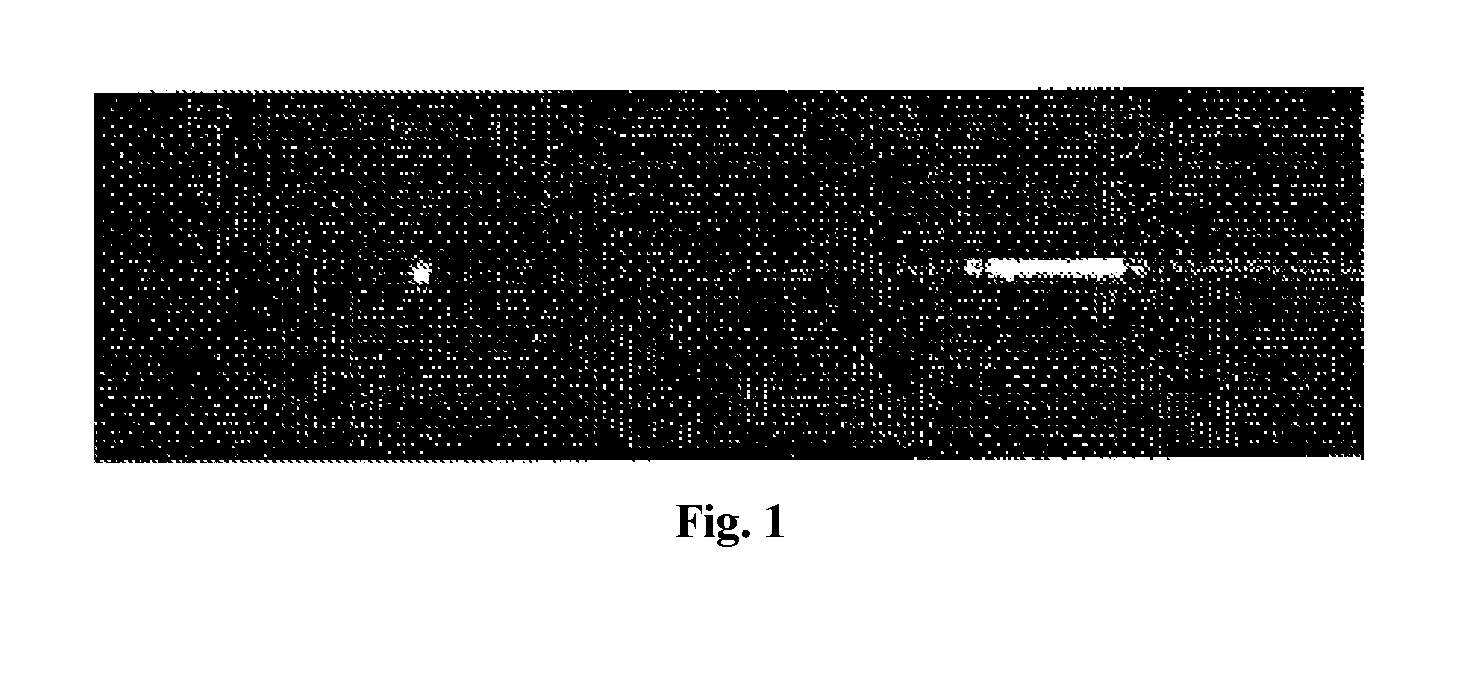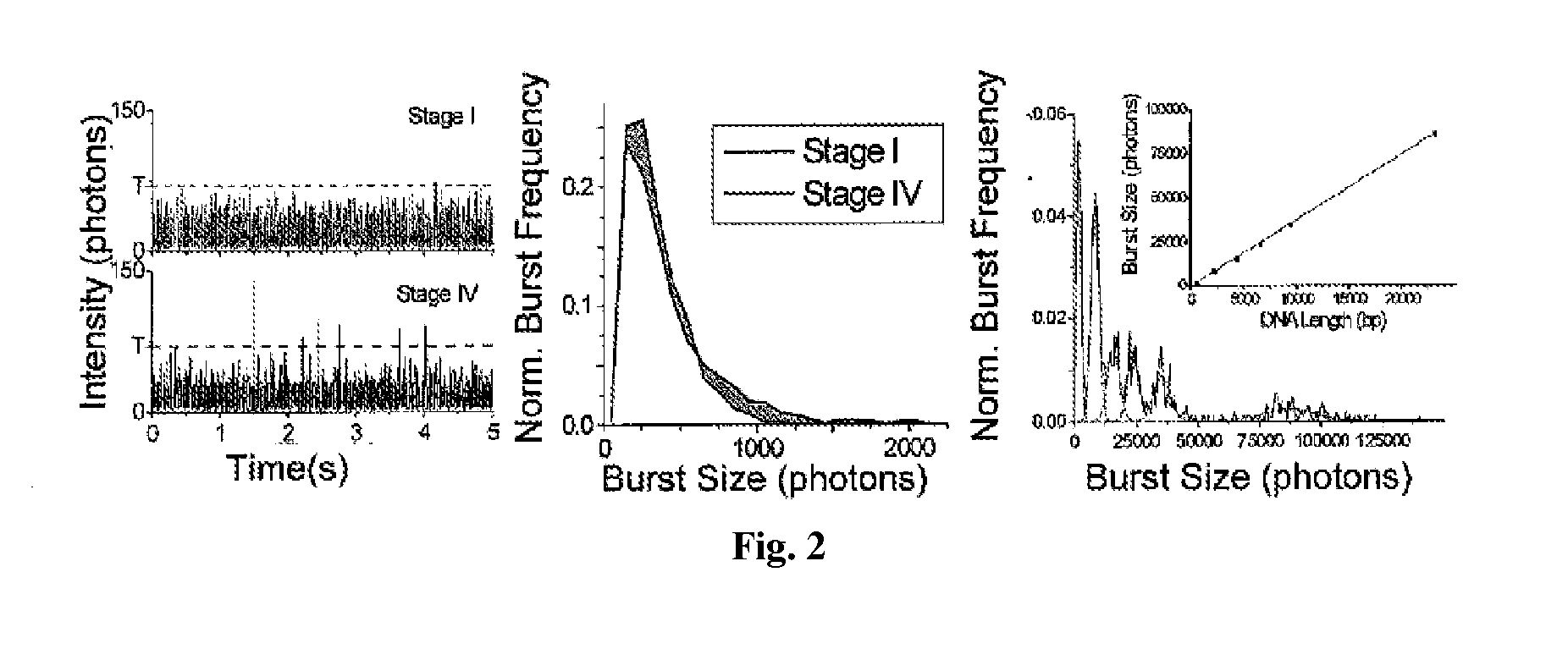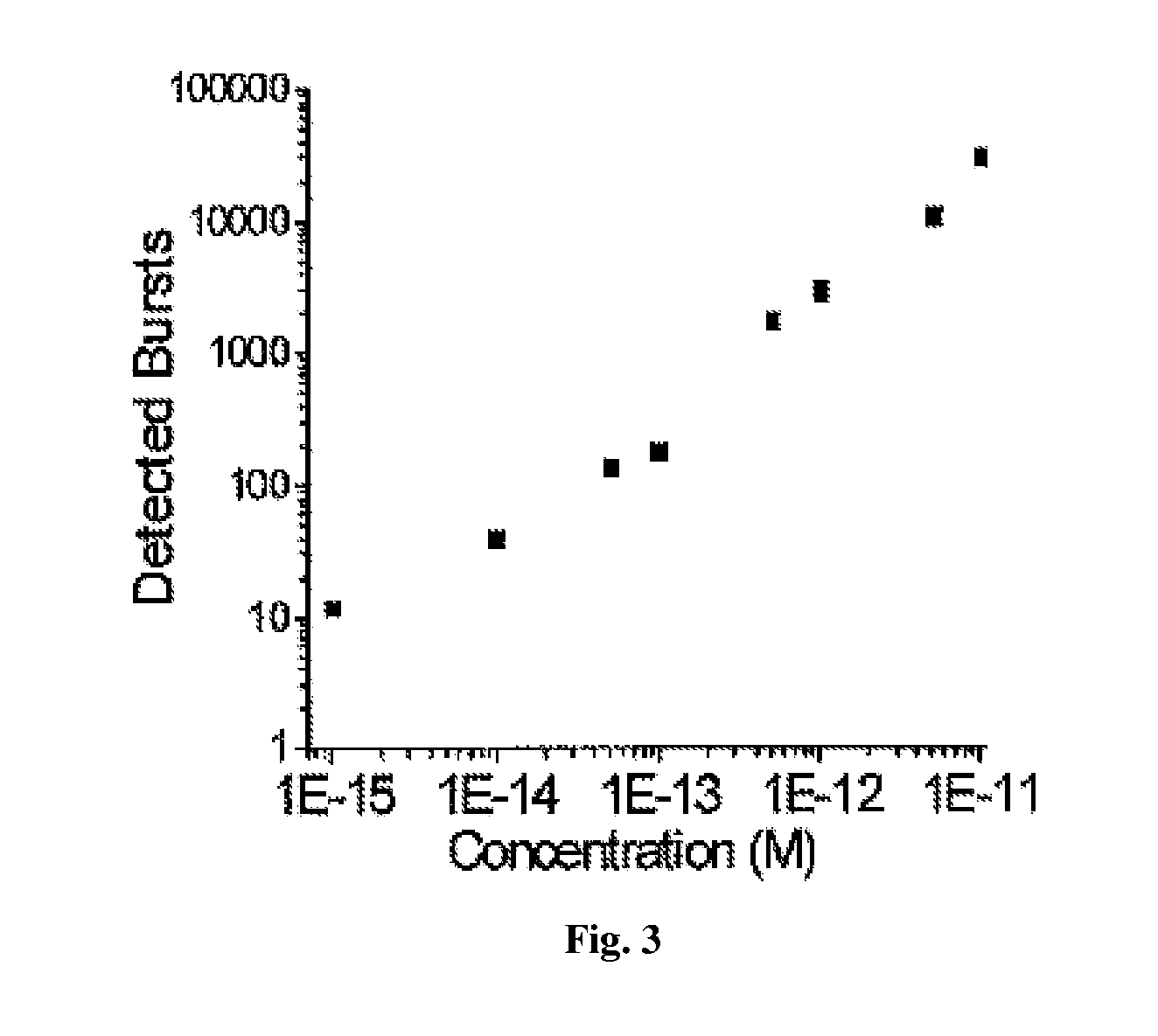Single molecule spectroscopy for analysis of cell-free nucleic acid biomarkers
a single molecule, nucleic acid technology, applied in fluorescence/phosphorescence, instruments, laboratory glassware, etc., can solve the problems of rapid and efficient translation, high cost of pcr-based diagnostic assays, laborious, time-consuming,
- Summary
- Abstract
- Description
- Claims
- Application Information
AI Technical Summary
Benefits of technology
Problems solved by technology
Method used
Image
Examples
example i
Applications of a Method of the Invention
A. 1-Step CNA Analysis.
[0170]Microfluidic Cylindrical Illumination Confocal Spectroscopy (μCICS) is ideally suited for the clinical analysis of CNAs. In μCICS, the standard diffraction limited CS observation volume is elongated in 1D to span the entire microchannel as illustrated inFIG. 1. The 1D expansion increases the mass detection efficiency to 100% and greatly enhances the analysis uniformity. Thus, it increases throughput, enables more accurate determination of molecular properties, and enables assays that are impossible to efficiently perform using other methods.
[0171]Using the μCICS platform, we have performed CNA analysis directly from serum with a 1-step assay called single molecule DNA integrity analysis (smDIA). With this assay, we are able to directly measure both DNA integrity (i.e. DNA fragment size) and DNA quantity without PCR amplification, DNA isolation, or separation steps. Previous studies have shown that the DNA integrit...
example ii
[0183]The terms light, optical, optics, etc are not intended to be limited to only visible light in the broader concepts. For example, they could include infrared and / or ultraviolet regions of the electromagnetic spectrum according to some embodiments of the current invention.
[0184]An embodiment of the current invention provides a confocal spectroscopy system that can enable highly quantitative, continuous flow, single molecule analysis with high uniformity and high mass detection efficiency. Such a system will be referred to as a Cylindrical Illumination Confocal Spectroscopy (CICS) system. CICS is designed to be a highly sensitive and high throughput detection method that can be generically integrated into microfluidic systems without additional microfluidic components.
[0185]Rather than use a minute, diffraction limited point, CICS uses a sheet-like observation volume that can substantially entirely span the cross-section of a microchannel. It is created through the...
example iii
Microfluidic System for High-throughput, Droplet-Based Single Molecule Analysis with Low Reagent Consumption
SUMMARY
[0247]A microfluidic device for a confocal fluorescence detection system according to an embodiment of the current invention has an input channel defined by a body of the microfluidic device, a sample concentration section defined by the body of the microfluidic device and in fluid connection with the input channel, a mixing section defined by the body of the microfluidic device and in fluid connection with the concentration section, and a detection region that is at least partially transparent to illumination light of the confocal fluorescence detection system and at least partially transparent to fluorescent light when emitted from a sample under observation as the sample flows through the detection region.
[0248]A microfluidic detection system according to an embodiment of the current invention has a microfluidic device having a detection region defined by a body of t...
PUM
| Property | Measurement | Unit |
|---|---|---|
| Volume | aaaaa | aaaaa |
| Volume | aaaaa | aaaaa |
| Volume | aaaaa | aaaaa |
Abstract
Description
Claims
Application Information
 Login to View More
Login to View More - R&D
- Intellectual Property
- Life Sciences
- Materials
- Tech Scout
- Unparalleled Data Quality
- Higher Quality Content
- 60% Fewer Hallucinations
Browse by: Latest US Patents, China's latest patents, Technical Efficacy Thesaurus, Application Domain, Technology Topic, Popular Technical Reports.
© 2025 PatSnap. All rights reserved.Legal|Privacy policy|Modern Slavery Act Transparency Statement|Sitemap|About US| Contact US: help@patsnap.com



